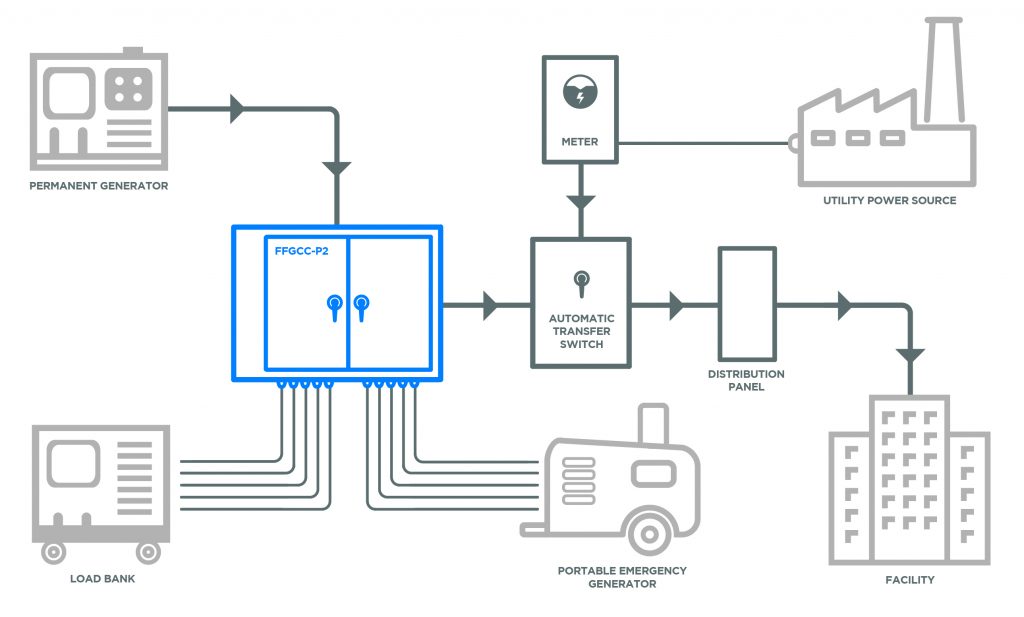A load bank is a device that produces an electrical load and applies it to an electrical power source, the power from which can be used to test or support the power source. There are different types of load bank, with different applications. Four commonly used types are resistive, inductive, capacitive, and electronic load banks. Below we briefly overview each type and explain its general realm of application.
1. Resistive
A resistive load bank is often used to provide equal loading capacity for a machine and its engine: the same amount of power that the load bank applies to the machine, the machine also applies to its engine. In a resistive arrangement, equal amounts of energy are removed from a complete operating system. For example, the amount of energy removed from a machine’s fuel by its engine is then removed from its engine by the load bank. Resistive loading is often used to test emergency power generators.
2. Inductive
An inductive load bank is often said to create a “lagging load.” This means that it produces a load that is 75% of the total kW resistive load by using a resistive load bank in combination with a reactive element. Due to their ability to simulate the mixture of energy required by various building elements, inductive loads are often used for full power system testing, as well as for specific evaluation of generators, voltage regulation equipment, and power transfer switches.
3. Capacitive
Capacitive loads are similar to inductive ones in terms of power rating and purpose of the application, but they differ in that capacitive loading generates the initial power factor load. This creates an increased power factor that is useful for testing systems that experience non-linear power loads, such as computer centers or telecommunications outfits.
4. Electronic
Electronic loads supply constant power whose delivery can be programmed to arrive at certain destinations and not others, making it an excellent choice for testing specific circuits, as could be useful in high voltage circuit breaker maintenance.
Generator Services That Address Load Banks
Loads are commonly used to support the function of critical emergency equipment such as circuit breakers, generators, and transfer switches. To choose the best type of equipment for your operation, it is, therefore, wise to consult with a provider of emergency industrial power services and equipment. Industrial power services that supply power equipment and load banks to general facilities also supply load banks for generators. Diesel-powered generators that don’t perform at 30% or higher than their nameplate rating load during tests should have their EPSS tested annually using an artificial load, according to a top supplier of emergency power equipment.

